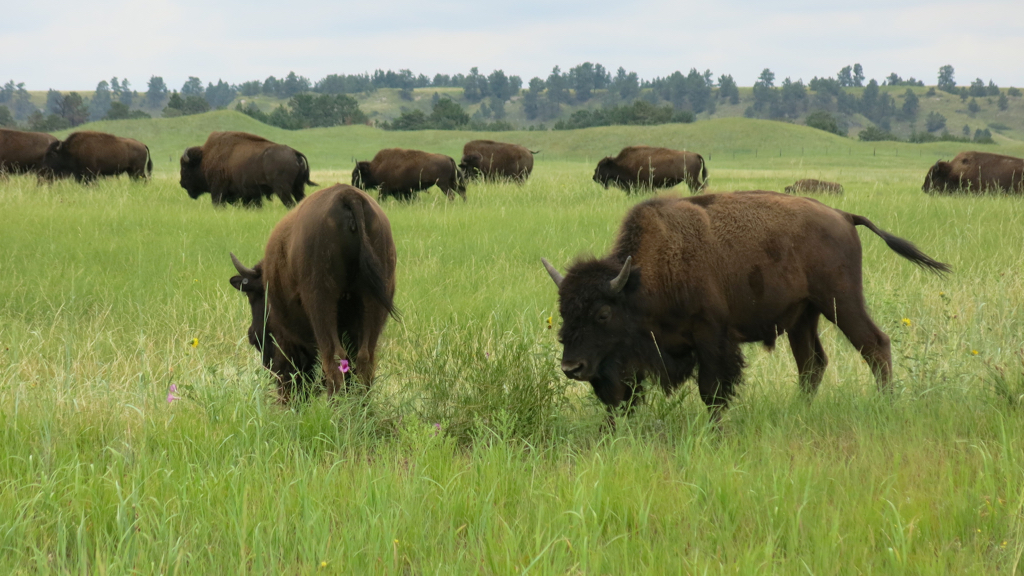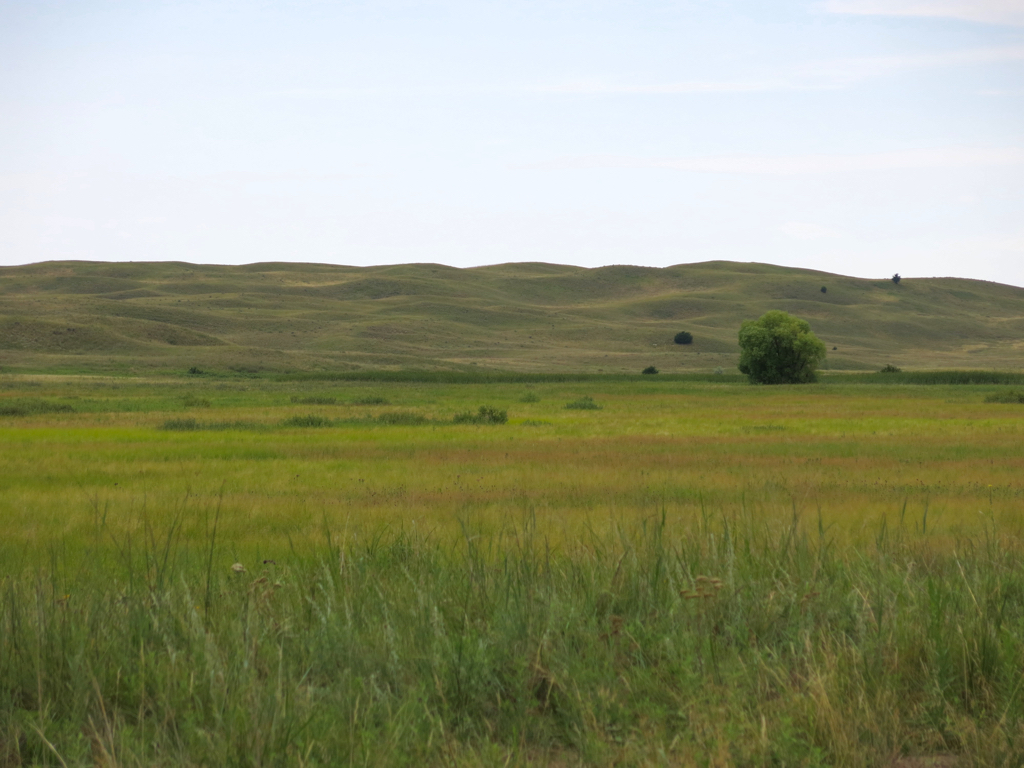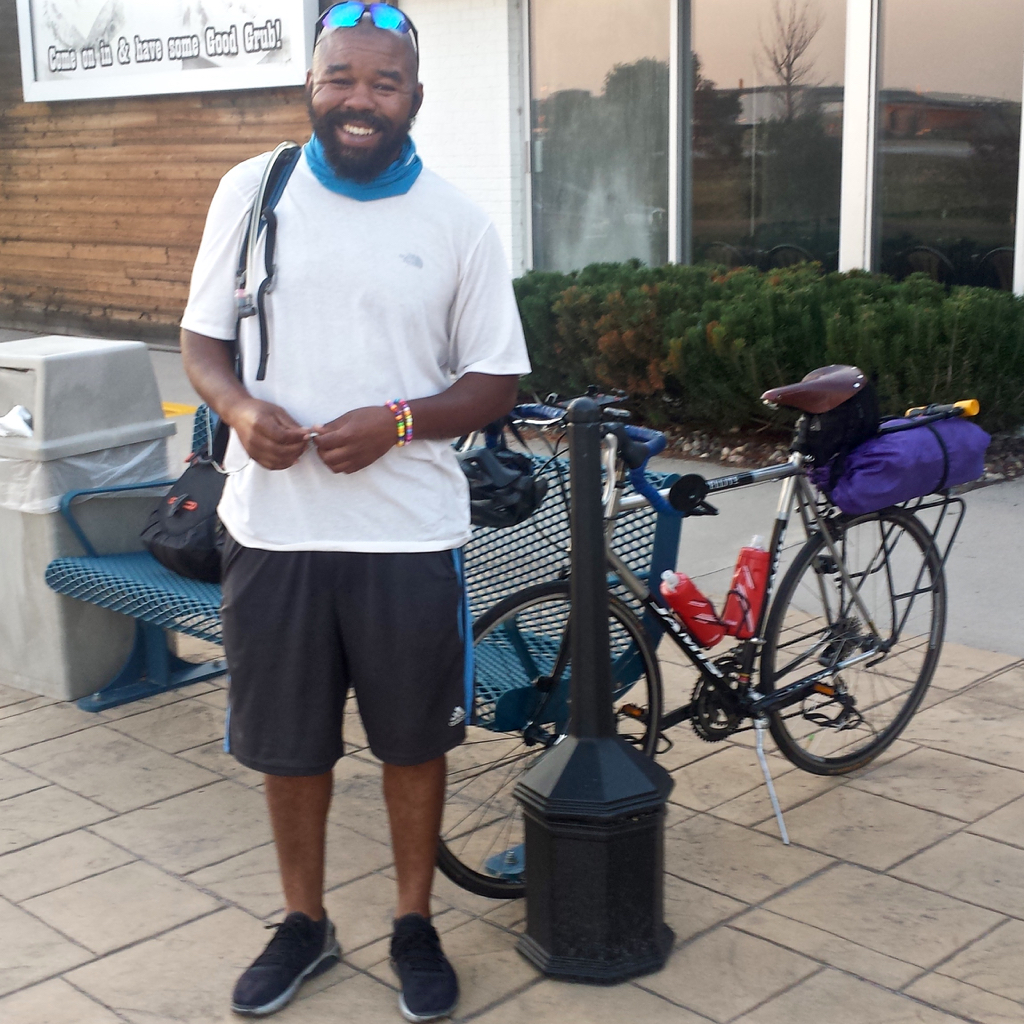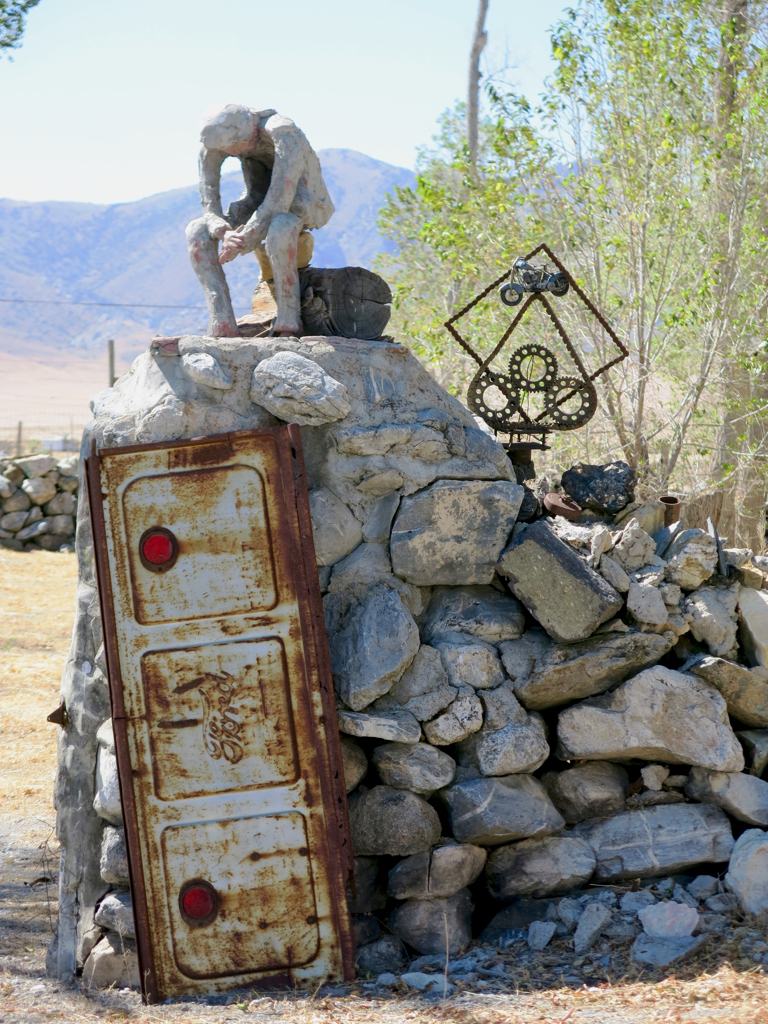This morning, before we did anything else, I had to sign a legal document relating to my father’s estate in front of a notary. We stopped at an insurance agent’s office, and the woman who greeted us said the person who was a notary was out, but her father-in-law up at the Ford dealership was a notary, so she called him and he said to come right up. We drove the three blocks up the hill to the Ford dealership across from the Jones County Courthouse. As soon as we got out of the car, a smiling man who had been talking with some people on the sidewalk greeted us and said he was Terry, the man we were looking for.
He took us into his office, made a couple of photocopies for me, and put his seal on the documents I signed. When I asked him how much I owed, he smiled and said, “Not a thing.” I was beginning to get the idea that everyone in Murdo, South Dakota, was friendly and courteous. I walked across the street to the Post Office to mail the documents, and everyone there was friendly and courteous. We stopped at the grocery store in town to get some vegetables, and everyone there was friendly and courteous, too. Murdo seemed like it might be a pleasant place to live.
We drove south on U.S. 83 over rolling prairie, down into valleys where small swift rivers shaded by a few stands of trees, then back up onto the almost treeless prairie. We were really in the Great Plains now. At Valentine, Nebraska, we turned east and drove four miles to Fort Niobrara National Wildlife Refuge. Here we got our first introduction to the Sand Hills of Nebraska: we went for a hike in what we knew was the prairie, but the soil was almost pure sand in places and we sometimes felt like we were hiking up a grass-covered sand dune at the beach on Cape Cod. Yet we were more than a thousand miles from the ocean.
While we were hiking, someone from the refuge rode by on an ATV. He stopped, and asked where we were going, and he said we should be fine but if we saw a buffalo we should keep away from it. Indeed, as we walked along we saw buffalo tracks in the sand, made probably early that morning: big cloven-hoofed tracks that went a couple of inches deep into the sand. But we didn’t see any buffalo, so when we finished our hike we drove east a mile along a gravel road to the summer bison range. And there they were, grazing, and running around in the grass, and rolling in the dirt of the road.

I am fascinated by the Nebraska Sand Hills, and I persuaded Carol that we should stop at Valentine National Wildlife Refuge, just a few miles south of Fort Niobrara, to see more of them. We walked the half mile trail up to an observation tower built by the Civilian Conservation Corps, and looked out at the strange landscape: huge areas of dull-green grass-covered sand hills, the hills a few hundred feet higher than the low-lying flat lands; the flat lands were either large shallow lakes, or bright green marshlands. The sand hills made weird shapes on the horizon, and they were steep enough in places that you could feel it in your legs when you climbed up them.

We arrived in Big Springs, Nebraska, at about half past six. As we drove into the motel parking lot, Carol saw a man with a bicycle. She said, it looks like he’s riding across the country. And sure enough he was riding across the country. His name was Tayo, he had started in Seattle, and he was headed east to his home in Maryland. Carol asked if she could photograph him, and I asked if I could put the photograph on my blog, and he gave his permission.

We asked him about his route, and how it was riding all that way, and then Carol asked him if he was riding for any particular reason. He said he was riding in memory of his son, who had lost his battle with depression last summer. I asked how old his son had been, and he said sixteen. I have his ashes right here, Tayo said, pointing to the rack on the back of his bicycle. He said he had been fine most of the day today, but it hit him about twenty minutes ago. I said that my father had died three months ago, which was not nearly as bad as losing a child, but that it came in waves. He nodded; it came in waves.
Tayo’s bike had gotten damaged earlier today, and while we were talking he was waiting for the rural shuttle to arrive and take him to North Platte where he could get it fixed. The shuttle pulled up, we helped him load his bike into the van, then we exchanged email addresses, and away he went.
After we brought our luggage into our room, I realized that a wave of grief had just washed over me, so while Carol talked with her friend Kirsten on the phone, I took a walk across the Platte River and back. I was fine when I got back; getting outdoors is the way I deal with those waves of grief. During our trip this summer, the best I’ve felt has been when I’m outdoors: fishing off the end of a dock at Lake Winnebago, spending a couple of hours looking for birds in Great Meadows in Concord, camping out in Maine. I can understand why Tayo wanted to spend several weeks riding his bike through hundred-degree heat and rainstorms, and cool cloudy days like today.






